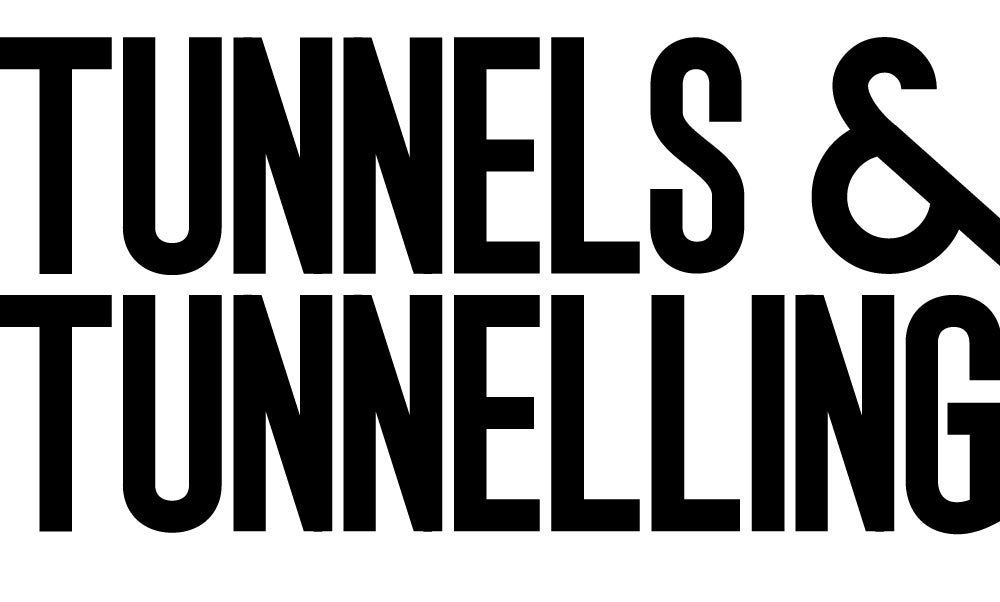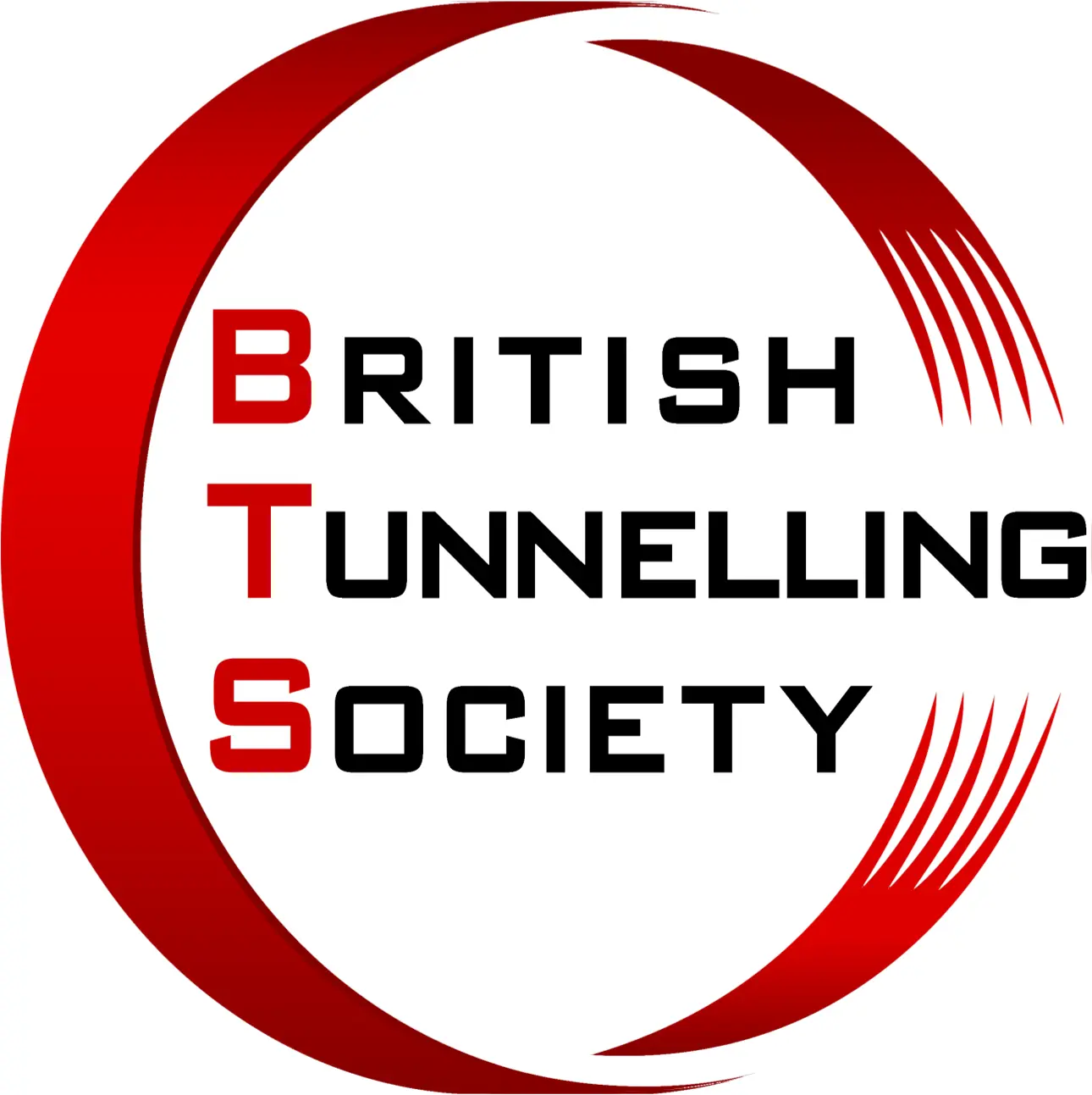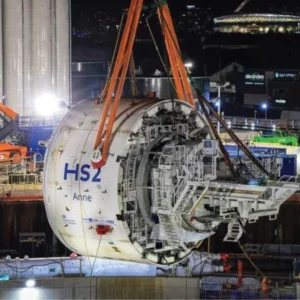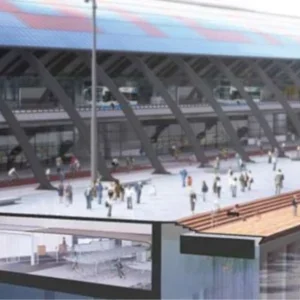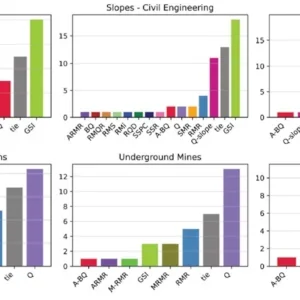On the 27 April 2004, client, contractors and consultants alike celebrated the top heading breakthrough – three months ahead of schedule – on the 1.3km long, 11m diameter, Nollinger Berg West road tunnel on the border of Switzerland and Germany.
The achievement proved to be a benchmark on a project that saw flexible NATM successfully used through challenging mixed ground conditions, which required both drill and blast in hard rock and excavators in soft ground to advance.
The project
The contractor, the ARGE Tunnel Nollinger Berg West JV, comprised of Östu-Stettin, Hinteregger und Söhne and Jäger, was awarded the US$24.2M contract to build the western tube of the Nollinger Berg Road Tunnel in May 2003. Final design as well as geotechnical assistance was handed over to a JV of iC consulenten and Laabmayr & Partner, with site supervision in the hands of Müller-Hereth.
The tunnel is being built for the Department of Motorways Bad Säckingen (part of the state government of Baden Württemberg, Germany) and when opened early next year will partner the existing east tube, which opened to traffic in 2002, thereby completing the link’s planned twin tube configuration.
When fully operational, the twin tunnels will form a critical section of the A98 Motorway from Germany as it connects with the A3 on the Swiss motorway system, by-passing the Swiss city of Basel.
The tunnel and geology
The alignment of the west tube lies some 30m (axis to axis) west of the existing tube. Much of the geotechnical information needed to design and construct the west tube was gathered during planning and construction of the eastern tube.
In fact, the 4.5m diameter pilot tunnel used for exploration purposes for the east tube was actually bored (from a shaft sunk in 1987) along part of the planned alignment of the west tube. The pilot tunnel started at chainage 550m and was driven north for just 200m.
In 2002, this was extended by more than 700m from the western tunnel’s southern portal position. This was done to provide an emergency escape tunnel for the eastern tube, the two being connected by three pedestrian cross passages and a larger adit for vehicular access.
The site investigations showed that the southern and northern part of the western tunnel differ significantly in rock types, rock conditions and geotechnical behaviour. Whereas in the southern areas deformation is governed by the interlocking of joint blocks of the rock mass, in the northern part deformation is heavily determined by differences in rock strength properties and the rate of water ingress.
The inclination of the tunnel, and the orientation of the strata, has resulted in the alignment running through two significant Triassic geological units. From the southern portal, after a short distance of some 40m through extremely weak debris, the main rock types are porous dolomite and limestone with intercalated marl (“Oberer Muschelkalk”).
These rocks are weathered with moderately to closely spaced joints of low to medium occurrence. Karstification with sandy to blocky-filled open joints is present and is associated with numerous faults that obliquely cut across the tunnel axis. Seepage is found only as dripping water.
Corresponding to the 5° to 10° N-NE inclination of the beds, a geology comprising dolomite, limestone and clay-rich marl (“Lettenkeuper”) follows, the latter rock type acting as an aquifer in the hanging wall. Experience showed that possible deformation in this rock proved to be moderate with 22mm of maximum settlement in the crown.
From roughly the middle of the tunnel northwards, considerably softer ground is encountered consisting of clay-rich marl and silt to siltstone with irregularly shaped lenses of gypsum-bearing marl and shale.
The marls and silts are weak, sometimes of low cohesion, always highly deforming and can be cut by excavator, whereas the gypsum lenses are far stronger and need to be removed by drill and blast. Parallel fault sets displace the contact of dolomite and clay-rich rocks. In particular at the contact of the gypsum lenses dripping to moderately flowing water is encountered.
Overburden ranges between 60m and 30m (12m minimum), although most of the northern part of the tunnel is situated at a shallow depth of only 20m to 25m below surface – in soft ground.
Tunnelling
During construction of both the pilot/emergency tunnel and the eastern tube between 1997 and 2002, the heterogeneous rock, and in particular the soft ground combining with higher than expected amounts of water ingress, caused severe problems with deformations. For this reason, it was decided that a flexible NATM approach would be used to construct the new tube.
To bore through these challenging and variable geological conditions, the tunnelling crew equipped itself with a twin-boom Atlas Copco 352 S for drilling duties, a Liebherr 932 T excavator for advancing through the soft ground and a Volvo 150 D wheel loader and three GHH MKA 32’s for spoil removal. All shotcrete for support was applied using a Putzmeister WKM 103.
The uphill 1.3km long single drive started from the southern portal on 8 August 2003. Initial excavation through the 40m stretch of debris required a limited four stage drift top heading protected by an umbrella arch, consisting of 140 x 15m long x 114mm diameter pipes installed in the roof for crown stabilisation.
Rock bolts and up to 300mm of shotcrete were used to secure the face as the tunnel was advanced initially as the top heading, followed by the bench and finally the invert. Support measures consisting of rockbolts, steel sets and 250mm to 300mm thick shotcrete were applied shortly after advance.
Once through the debris, driving in the hard rock using drill and blast could begin. The more competent rock negated the need for an invert, bringing the face area down from 100m2 to 87m2, driven as a 100m to 150m long top heading followed by the bench. Between 30kg to 80kg of explosives were used per round for the 1m to 1.5m advance of the top heading.
To secure jointed and partly weathered rock, 3m to 4m long forepoles were regularly used at the crown. Overbreak was marginal due to favourable joint sets and good workmanship. Again, support consisted of rockbolts, steel sets and 250mm to 300mm of shotcrete. Muck was typically sized 50mm to 700mm and thus could be hauled without any problems.
The soft ground of the northern part of the tunnel needed special attention to prevent large deformations. A flexible excavation and support concept was required to handle the heterogeneous ground conditions. Rock bolting at the face (up to 12m straight ahead), a temporary shotcrete invert (up to 250mm thick) and forepoles were usually placed.
Excavating the face was performed in three, up to a maximum of eight, stages to guarantee safe working conditions. Mixed face conditions frequently required drill and blast work as well as the use of a mechanical excavator at the same chainage.
Advance rates and experiences
Despite highly varying ground conditions, excellent excavation rates were achieved of up to six rounds/24hr in soft ground (typically 1m length of excavation) and up to eight rounds/24hr in hard rock (usually 1.5m length of excavation). After just nine months of driving, the top heading breakthrough was achieved at the northern portal on 27 April 2004.
In comparison to tunnelling on the eastern tube, water ingress during excavation of the western tube was significantly lower. It is assumed that ground water levels were lowered during and because of construction of the eastern tube. As a precautionary measure to avoid the clay-rich rocks and any water forming mud at the bottom of the top heading, drainage liners and hoses were used. In addition, 1m deep holes, 25m apart were dug at the base of the innermost 150m of the pilot tunnel to pump any water out of the rock mass to be excavated.
The emergency tunnel was found to significantly stabilise the face acting almost as an oversized bolt within the face. Longitudinally, loads were transferred into its lining, although excavating around it required care. The pilot’s thick shotcrete walls, up to 2m thick, and the high amount of support (forepoles, rock bolts) had to be removed by drill and blast.
In the northern part, where no emergency tunnel existed, the central section of the top heading was left in place as a safety buttress to prevent rock sliding out into the tunnel.
Monitoring and conclusions
Deformation frequently showed more than 50mm of settlement at the crown, 30mm to 40mm of settlement of the walls within 24hrs, and up to 130mm of vertical movement seen in the crown. This usually stopped four to five days after initiation. Deformation of the walls was in the range of 20mm to 30mm of horizontal displacement inward, with vertical displacement of up to 80mm.
These rates were not only due to geological conditions, but also the fast excavation rate that significantly influenced the interaction of the rock mass, the support and ultimately the tunnel. In particular, the strength of the shotcrete seemed to be a major factor in controlling the rates of deformation.
With the un-reinforced inner lining scheduled for completion in late 2004, the team has concluded the success of the project can be attributed to a combination of the flexible tunnelling approach in the varying ground, the stabilising effect of the existing emergency tunnel on the face, and the reduced water ingress due to drainage by earlier tunnelling works.
Last but not least, the importance of a highly experienced team, and the efficient maintenance of the equipment truly proved its worth.
Related Files
Fig 2 – Longitudinal section of the tunnel with geology and related structures shown
Fig 1 – location map of the Nollinger Berg Tunnel
Fig 3 – The three main excavation cross sections used through the tunnels varying geology
